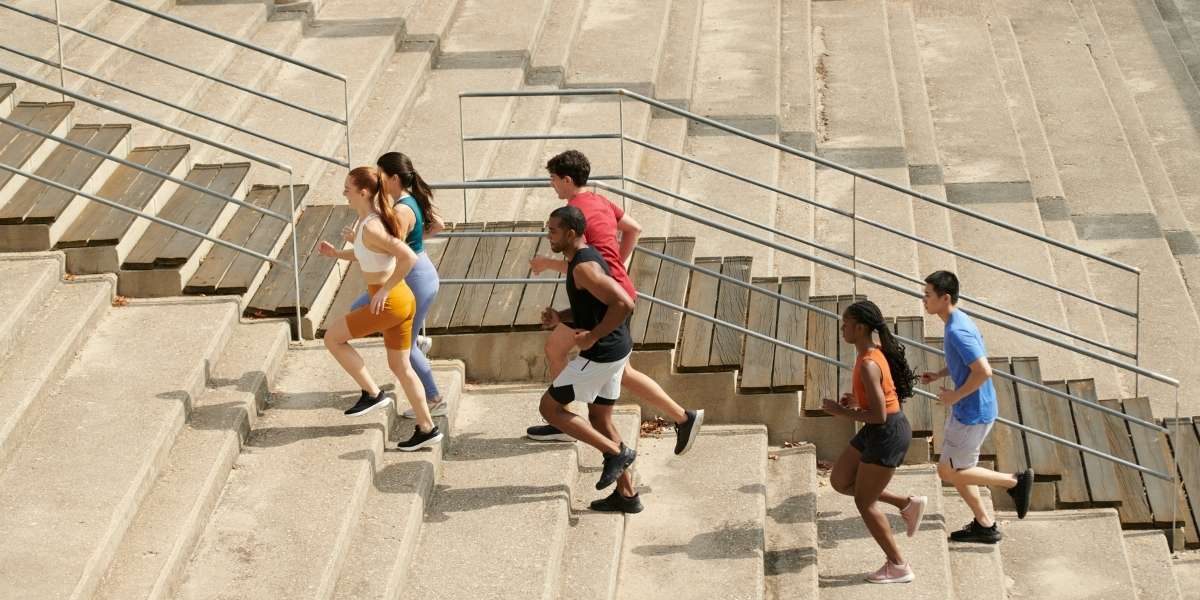An active lifestyle is more than just engaging in regular exercise; it represents a holistic approach to overall well-being. It’s about integrating movement into your daily routine, providing benefits that enhance not just physical health, but mental and emotional vitality as well. This article explores the multi-faceted nature of an active lifestyle, emphasizing its profound impact on your life and offering practical tips for making movement an everyday habit.
Read Also: Small Steps, Big Impact: Your 2025 Health Plan
Physical Benefits of an Active Lifestyle
The most obvious advantages of an active lifestyle are the physical benefits it brings. Regular physical activity helps maintain and improve various bodily functions, reducing the risk of many chronic diseases and enhancing quality of life.
Improved Cardiovascular Health
Engaging in consistent physical activity strengthens the heart, increases blood circulation, and improves oxygen delivery throughout the body. This reduces the risk of heart disease, hypertension, and strokes.
Increased Muscle Strength and Endurance
Activities like weightlifting, swimming, and cycling build muscle strength, enabling the body to perform daily tasks with ease. Enhanced endurance helps improve energy levels and stamina over time.
Enhanced Flexibility and Mobility
Stretching and mobility exercises increase joint flexibility, reducing the risk of injury and improving overall movement efficiency. Regular activity helps maintain muscle length and mobility, which is particularly important as we age.
Weight Management
A balanced active lifestyle helps regulate weight by burning calories and improving metabolism. Regular movement, paired with healthy eating, can maintain or help reach a healthy weight, reducing the risk of obesity-related conditions.
Reduced Risk of Chronic Diseases
Physical activity plays a key role in managing and preventing chronic diseases like diabetes, arthritis, and certain cancers. By staying active, you can improve blood sugar levels, maintain bone density, and reduce inflammation.
Mental and Emotional Well-being
The benefits of an active lifestyle extend beyond physical health. Movement also has a profound impact on mental and emotional well-being. Regular exercise has been shown to improve mood, reduce stress, and enhance cognitive function.
Stress Reduction and Mood Elevation
Exercise promotes the release of endorphins, which are natural mood elevators. This leads to lower levels of stress, anxiety, and depression. Physical activity can also create a sense of accomplishment, boosting self-esteem and confidence.
Improved Cognitive Function
Research shows that regular physical activity enhances brain health, including memory, focus, and problem-solving abilities. Exercise increases blood flow to the brain, helping maintain cognitive function and reducing the risk of cognitive decline.
Combatting Anxiety and Depression
Exercise has been proven to be an effective tool in managing symptoms of anxiety and depression. It provides a natural, drug-free way to reduce feelings of sadness and anxiety, allowing individuals to feel more balanced and emotionally stable.
Diverse Forms of Activity
An active lifestyle doesn’t mean you need to follow a rigid workout routine. The beauty of this lifestyle is its versatility. There are many ways to stay active, and the key is finding activities that align with your preferences and abilities.
Traditional Exercise Routines
Running, swimming, cycling, and weightlifting are tried-and-true methods for improving fitness and endurance. These structured exercises are effective in building strength, flexibility, and cardiovascular health.
Everyday Movements
Incorporating movement into your daily life doesn’t always require a gym membership. Walking, gardening, or even doing household chores can keep you active and provide health benefits. Consider taking the stairs instead of the elevator, walking to local errands, or biking to work.
Dance and Sports
Dancing, whether through structured classes or spontaneous movement at home, is an enjoyable way to stay active. Similarly, team sports or recreational activities such as tennis, soccer, or even bowling contribute to an active lifestyle while fostering social connections.
Integrating Activity Into Daily Life
A major challenge for many people is finding time for physical activity. With busy schedules, it may feel difficult to prioritize movement. However, incorporating activity into your day is possible with practical strategies.
Set Realistic Goals
Start small by setting achievable goals that fit into your routine. Whether it’s walking for 20 minutes daily or fitting in a yoga class twice a week, make sure your goals are realistic and manageable.
Find Convenient Opportunities for Movement
Look for simple ways to incorporate activity into your day. For example, take short walking breaks throughout the day or stretch during TV commercials. Small amounts of movement add up over time and contribute to overall well-being.
Leverage Technology for Motivation
Fitness apps and devices can help track your progress, providing motivation and keeping you accountable. Many apps offer personalized workout plans, reminders, and progress tracking to ensure you stay on track.
Creating Sustainable Habits
Building an active lifestyle isn’t just about short-term motivation; it’s about creating long-term habits that become a permanent part of your life. Here are some strategies for making activity a consistent habit:
Focus on Enjoyment
Choose activities you enjoy to make exercise feel less like a chore. Whether it’s hiking, dancing, or playing sports, enjoying what you do will make you more likely to stick with it long term.
Consistency Over Intensity
It’s better to engage in moderate activity regularly than to push yourself too hard at the start and burn out. Consistency is key for building sustainable habits that support an active lifestyle.
Build a Supportive Environment
Surround yourself with people who encourage and support your active lifestyle. Join fitness groups, attend classes, or partner up with friends or family members to stay motivated and hold each other accountable.
Active Living Across Lifespans
Maintaining an active lifestyle is essential at all stages of life. From childhood to old age, movement is a vital part of staying healthy and living well.
Children and Adolescents
For young people, physical activity supports healthy growth, development, and learning. Encouraging kids to be active through sports, games, and outdoor activities promotes long-term habits that they carry into adulthood.
Adults
As adults, maintaining an active lifestyle helps manage stress, increase energy levels, and prevent chronic diseases. Regular activity improves productivity, work performance, and overall well-being.
Seniors
For older adults, staying active is crucial for maintaining mobility, independence, and cognitive function. Simple exercises like walking, swimming, or gentle yoga can significantly enhance quality of life and reduce the risk of falls.
The Social Dimension of Activity
Exercise and movement aren’t just beneficial for the body and mind—they also have a positive social component. Engaging in group activities, sports teams, or fitness classes can foster social connections and a sense of community.
Participating in group activities provides opportunities to build friendships, share experiences, and support each other’s goals. These social interactions can enhance your overall active lifestyle, making it more enjoyable and sustainable.
Read Also: Enjoy the Magic of Vienna’s Holiday Concerts and Culinary Scene
Embrace an Active Lifestyle for a Vibrant Life
An active lifestyle is about more than just exercise; it’s about making movement a regular part of your day to support physical, mental, and emotional health. By embracing activity at all stages of life and finding ways to integrate movement into your daily routine, you can reap the countless benefits of a more vibrant and fulfilling life.





